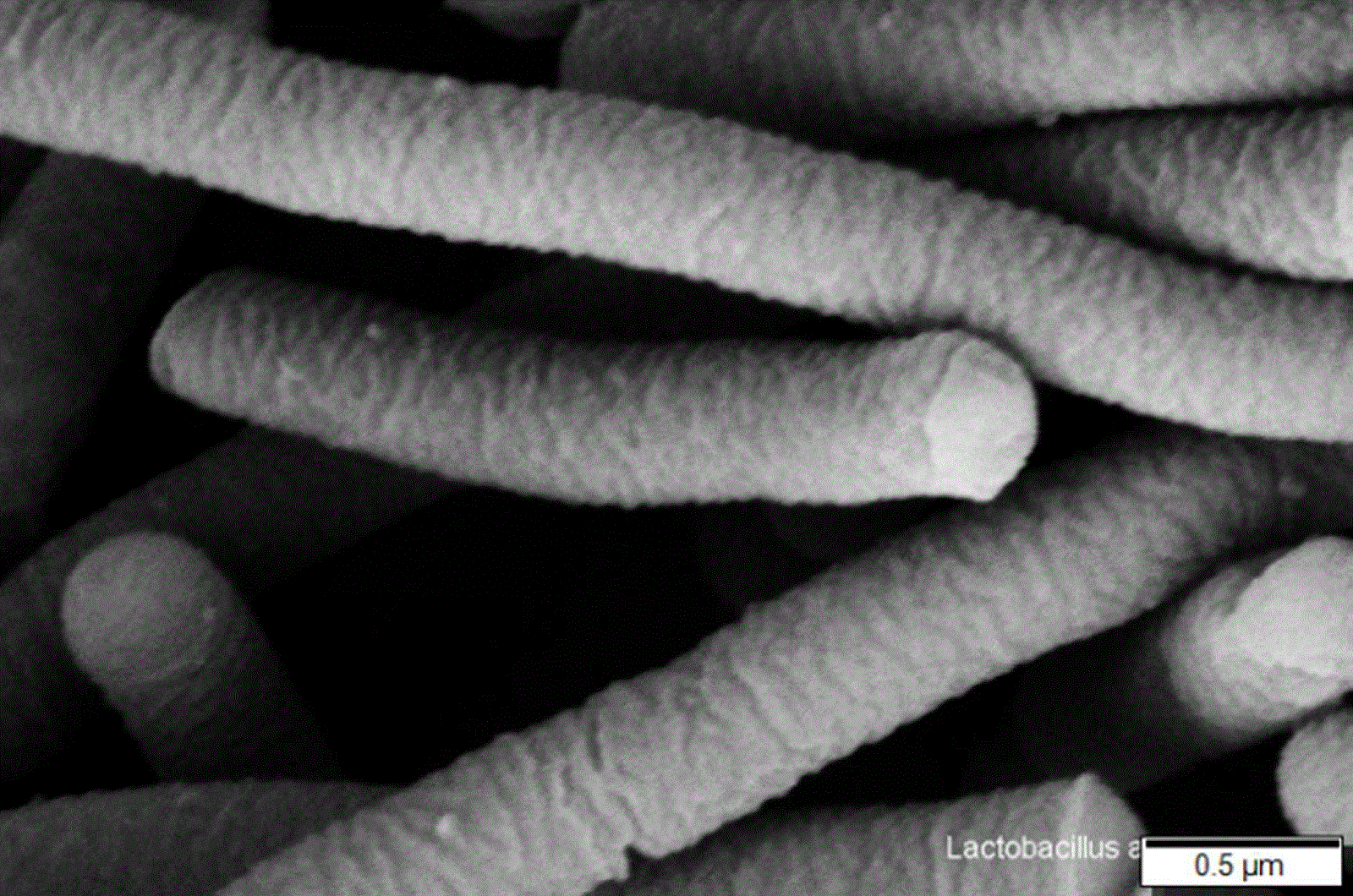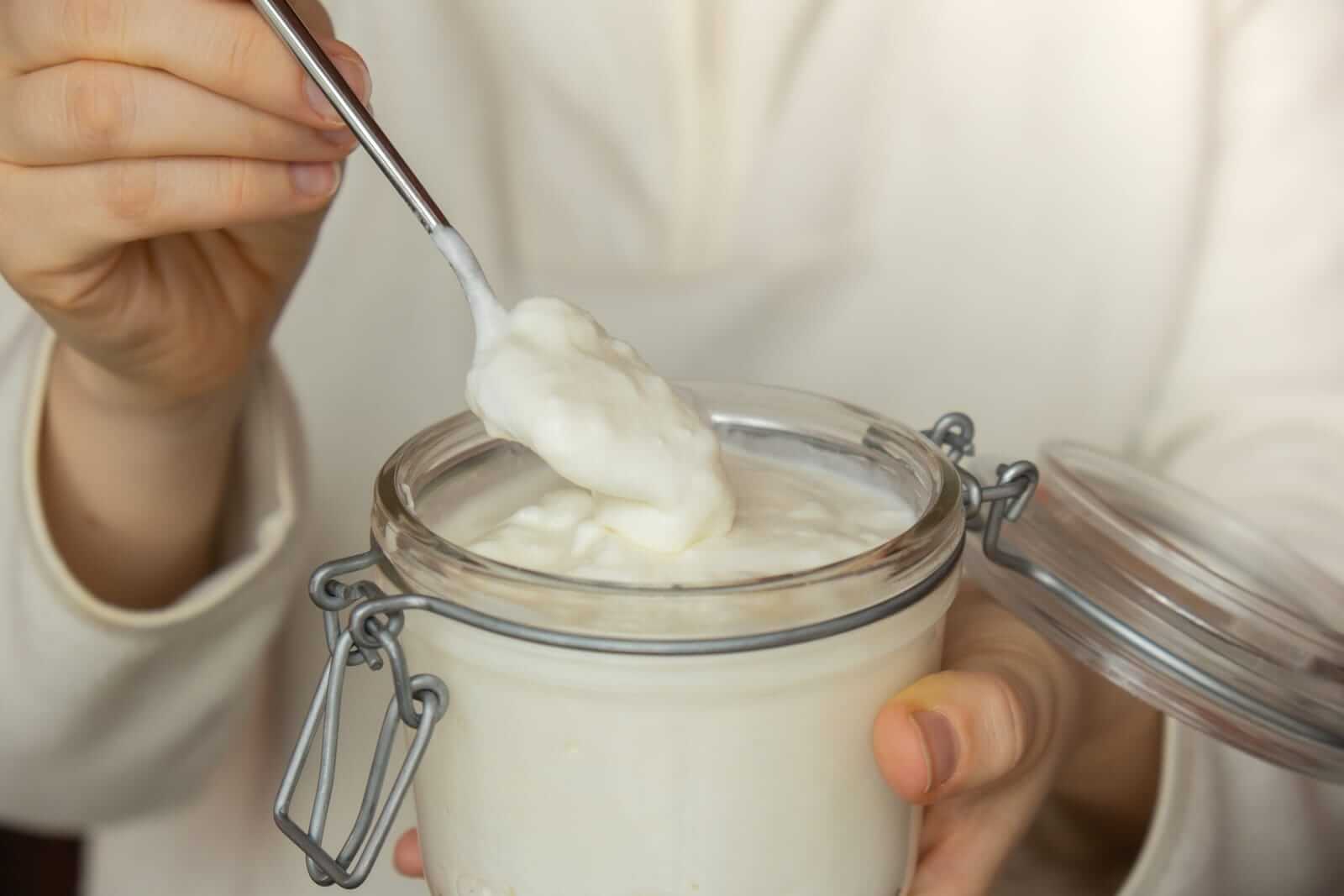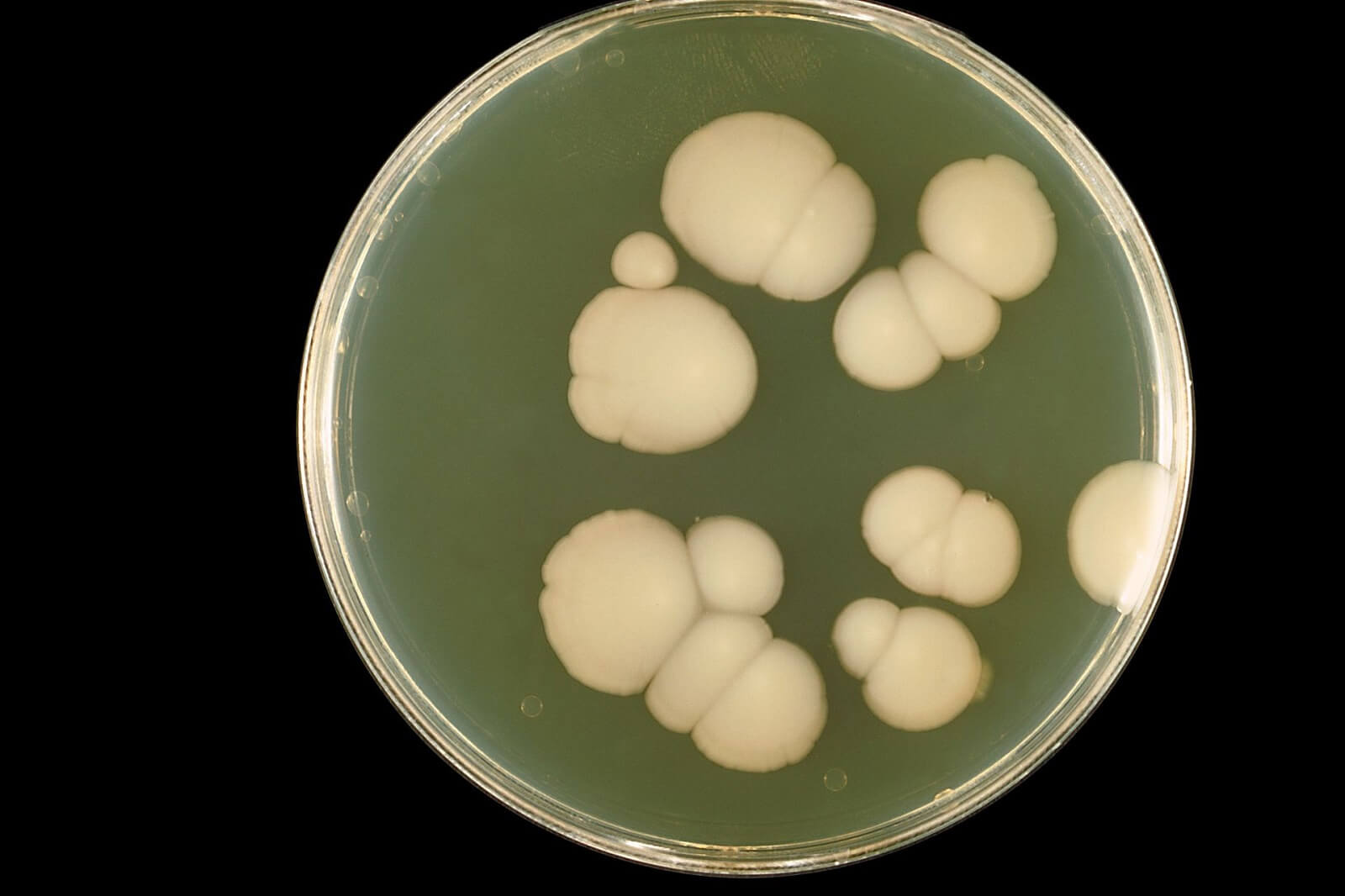See all "Miscellaneous" Section Topics

If you find yourself suffering from an infestation of Candida, you may know that one thing you can do to help allay the Candida infection is to introduce probiotic bacteria to the site of the Candida infection. One bacteria that has been shown to help stop a yeast infection is L. acidophilus, a lactic acid producing bacteria. To get L. acidophilus introduced to the area where the Candida has invaded you can use a L. acidophilus pill or you can make your own Yogurt that contains live cultures of L. acidophilus.
Yogurt is typically produced from two types of bacteria Streptococcus thermophilus and Lactobacillus bulgaricus. The United States Food and Drug Administration requires that Streptococcus thermophilus and Lactobacillus bulgaricus are used to produce yogurt from milk. These bacteria may not be able to survive in the intestines of humans and therefore may not be able to help mitigate a Candida infestation in the gastrointestinal tract.
Yogurt and Candida

Yogurt that is rich in live L. acidophilus bacteria can help both the vagina and gastrointestinal tract fight of Candida. If you are prone to suffering from recurrent Candida infections than acidophilus yogurt can help to reduce the frequency of Candida infection recurrence. This is due to the fact that yogurt containing L. acidophilus, when ingested, will introduce the bacteria that can survive the gastric acid into the intestines and begin to fight off Candida in the intestines.
Once the L. acidophilus present in the yogurt have colonized the gastrointestinal tract, they will make their way to the rectum. Once the L. acidophilus have colonized the rectum, they will migrate into the vagina. Once in the vagina L. acidophilus can start to consume excess sugars and produce lactic acid.
A study done in the 1970’s at Michigan State University was done on 98 women who were plagued by repeat bouts of vaginitis. Of the 98 women who suffered from repeated attacks of vaginitis, all of them had yeast in their stools. If Candida was Candida was cultured from the vagina it was always found in the stools. And, if Candida was not found in the stools it was never found in the vagina. The study suggested that Candida in the gastrointestinal tract was the causal factor in recurrent episodes of vaginal Candidiasis. The study stated that a definite cure for vaginitis would be impossible unless Candida was eliminated from the gut first.
A 1/2 Day & Yeast is Gone!
Linda Allen suffered from yeast infections for years. Through researching natural medicine & Candida, she found an efficacious solution!
Linda is one expert you want on your side! Let her show you how to get rid of a superficial yeast infection in just 12 hours; AND, keep it gone!
A 60-day, 100% money back guarantee is provided.
Visit Official Site!How Yogurt Helps Heal Candida Infections

Yogurt that contains live cultures L. acidophilus can help to stop Candida by doing two different things. L. acidophilus is a lactic acid producing bacteria and ferments sugars into lactic acid. Candida fungus does not tolerate highly acidic environments and therefore Candida’s growth is inhibited by the lactic acid produced by L. acidophilus. As mentioned earlier, L. acidophilus ferments sugars and therefore reduces the total amount of sugar present in its environment. Without a high amount of sugar available to feed on, there is less of a chance that Candida will overgrow to the point where it will cause an irritating infection.
There are many different commercial brands of yogurt available today. The yogurt you buy at the store has likely been pasteurized and has therefore had the bacteria living in it killed. There are many commercial brands of yogurt that do not contain L. acidophilus. In addition to pasteurization, many types of yogurt contain fruit or added sugar. The sugar in the fruit as well as any added sugar are all able to be consumed by Candida and therefore could aggravate a Candida infection. An efficacious yogurt candida remedy will employ yogurt with no added sugar or fruit and have live cultures of L. acidophilus, a bacteria that can survive the acid produced by the stomach.
Eliminate Bacterial Vaginosis & Vaginal Odor
Jennifer O’Brien is one prominent expert on BV that knows how to get rid of vaginal odor. BV is a common infection that you don’t have to put up with.
Jennifer will show you how to naturally eliminate vaginal odor in just 3 days.
A 60-day, 100% money back guarantee is provided.
Visit Official Site!A Study on Yogurt and Candida
Eileen Hilton and her helpers at the Long Island Jewish Medical Center in New Hyde Park, N.Y, performed a study that demonstrated the efficacy yogurt containing L. acidophilus as a candida treatment. Women who ate yogurt with live L. acidophilus cultures proved less likely to become infected with Candida.
Clair Goodall: Author & Nature Lover
Clair Goodall is a bee-obsessed natural medicine convert from Minnesota. She is one expert you might want to know more about!
Clair will help you protect you and your family from toxic products and chemicals and help you discover solutions from nature.
Also, Clair’s book is backed by a 60-day, 100% money back guarantee
Visit Official Site!A Natural, 12 Hour Yeast Infection Cure

According to a research paper published in Clinical Microbiology Reviews [12.1 (1999): 80-96], Candida species are quite ubiquitous organisms. Candida are most frequently present in the mouth; and, live in 31% to 55% of healthy people. The species that causes approximately 70% to 80% of all Candida infections is C. albicans.
The Chinese Journal of Obstetrics and Gynecology [2011 Jul;46(7):496] reports there appears to be a correlation between intestinal Candida infections and vaginal yeast infections. And, this provides a clue, as to why yeast infections in general, can reoccur.
This study states, in 148 cases of vaginal candida infections, 33.1% of the women were infected in both the intestines and vaginal area. The recurrence rate of yeast infections, in women with simultaneous intestinal infection, was significantly higher than for women who did not have an intestinal infection. This study concluded that vaginal yeast infections are highly associated with simultaneous intestinal Candida infection.
As research appears to indicate, systemic Candida infections can and do happen. A more systemic Candida infection may primarily get a foothold in the intestines; and cause a wide array of problems. If your yeast infections keep happening, a systemic Candida problem may be why.
One woman who suffered from a systemic Candida infection, for about 12 years, was Linda Allen. The systemic Candida infection that attacked Linda caused a wide range of health problems in addition to yeast infections. Some of these problems, Linda describes in her own words in the following quote:
To be honest, it was hard to pinpoint exactly what was wrong: I wasn’t really sick, but I wasn’t really well either. I had listlessness, fatigue, brain fog, stomach ailments, unexplained rashes, skin infections, and so on. It seemed like every day brought a new challenge.
My energy was sapped and I felt exhausted, which affected my grades and put a big dent in my social life.
Linda Allen’s symptoms included an embarrassing vaginal discharge, severe itching, and burning sensations. Her infections were difficult to deal with, and Linda’s health problems cost her financially as well. Linda states these infections of Candida can become excruciating when they happen as frequently as a menstrual period.
Yet, Linda spent a great deal of time in research; and even questioned health professionals who were kind enough to share some time with her. Linda even tried an array of purported "cures." Although it took a while, eventually, Linda put together a natural treatment plan she hoped would solve her Candida situation.
After spending about a year refining her new approach, Linda tried her system on herself. It worked amazingly well. Linda even returned to a few medical doctors to get tested for the presence of infections. These tests revealed all indicators of infection had vanished! Linda was indeed well again, after such a long, difficult journey.
Linda has since published a book detailing how to copy her success. She also includes a 12 hour yeast infection cure that can get rid of a superficial (such as a genital yeast infection or oral thrush) yeast infection in about 12 hours.
Linda’s publisher protects those who get her book with a 60 day, 100% money back guarantee. Linda’s publisher, a subsidiary of the United States based firm Keynetics Incorporated, is a reputable digital retailer that has been around for a long time. They have great customer service, and make getting a full refund on Linda’s book quick and easy. If you’re not satisfied, you can quickly get all your money back.
If you would like to learn more about Linda’s journey to freedom from Candida, see reviews of others who tried her natural system, or find out more about her efficacious book; you can find more information at Linda Allen’s website.
Author: Mr. Nicholas Gross

Nick Gross is a natural medicine enthusiast who has been researching and writing about natural medicine since 2008. Nick is primarily a web developer but also researches and authors written and video content about natural health. Nick has a bachelor’s degree in Management Information Systems from the University of Northern Iowa.
Disclaimer
The information on this website is not a prescription for anyone. This information is for informational or educational purposes only, and is not a substitute for professional medical advice or consultations with healthcare professionals.
Affiliate Disclosure
Some of the links provided on this website are affiliate links. When a purchase is made through these links, Candida Hub earns money from commission. This helps to keep the website up and helpful to people for free. Thank you for any support!
Stay Up to Date
If you enjoyed this article, consider following / liking our Facebook page. This page is primarily utilized to alert followers of new articles that are put on Candida Hub. Candida related news is also discussed. While you are there, you can see what has been more recently added to Candida Hub.
SOURCES:
- Prevention; May90, Vol. 42 Issue 5, p20-23, 1p L. acidophilus is not killed by stomach acid
- William G. Crook, The Yeast Connection and the Woman — p.100 1970’s study on Candida in the stool.
- https://doi.org/10.1128/CMR.12.1.80 -- Fidel, Paul L., Jose A. Vazquez, and Jack D. Sobel. "Candida glabrata: review of epidemiology, pathogenesis, and clinical disease with comparison to C. albicans." Clinical Microbiology Reviews [12.1 (1999): 80-96].
- https://pubmed.ncbi.nlm.nih.gov/22041440/ -- Lin XL, Li Z, Zuo XL. "Study on the relationship between vaginal and intestinal candida in patients with vulvovaginal candidiasis." Chinese Journal of Obstetrics and Gynecology (Zhonghua fu chan ke za zhi). [2011 Jul;46(7):496].







